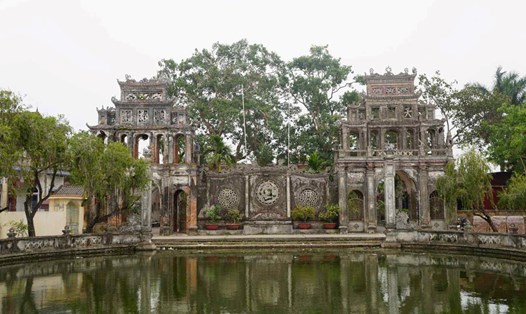Waterfall Class
According to SCMP, two famous stone carvings from the Han Dynasty (206 BC-220) depict great philosophers of ancient China. Among influential figures such as Confucius and Lao Tzu, the appearance of a young boy standing in the center attracts everyone's attention.
This boy was Xiang Tuo, commonly known as the “child prodigy” and is said to have lived during the same period as Confucius in the 6th century BC. According to many anecdotes, by the age of 7, he was able to explain philosophical issues to the revered master Confucius.

Xiang Tuo’s name appeared in records around the 3rd century BC and is considered the first “child prodigy” model in Chinese literature. Starting from the Han Dynasty, Xiang Tuo was honored as a typical model for talented child prodigies.
According to Vibrant Dot, a folk legend tells that Confucius first met Xiang Tuo on the road. Xiang Tuo was playing with his friends in a fort he had built himself and refused to let Confucius's carriage pass.
When Confucius asked why, Xiang Tuo replied: “The ancients said that a man should know everything in heaven, on earth, and in his heart. From ancient times to the present, I have only heard of chariots avoiding fortresses, but I have never heard of fortresses giving way to chariots.”
Doanh Chinh - Qin Shi Huang
Ying Zheng, better known as Qin Shi Huang, was the first Emperor of China. He was born in 259 BC and died in 210 BC.
Before becoming Emperor, he ascended the throne of Qin at the age of 13. Ying Zheng's first act after becoming king was to execute his father and regent Lu Buwei, regaining real power.

At a very young age, Ying Zheng built the Qin state into a powerful centralized empire. In the following years, the Qin king's army roamed the battlefield, becoming the terror of neighboring countries.
In less than 20 years, Doanh Chinh defeated 6 vassal states, unified the country, and became the first Emperor of China.
Puyi
According to SCMP, if Ying Zheng was the first emperor of China, then Pu Yi (1906 - 1967) was the last emperor. During the final period of the Qing Dynasty (1644-1911), Pu Yi was crowned emperor in 1908, when he was only 2 years old.
Pu Yi's reign was short-lived, as he was forced to abdicate in February 1912. The Xinhai Revolution of 1911 led to the collapse of the Qing dynasty.

Pu Yi was back on the throne from June to July 1917. From 1912 to 1924, he was allowed to live in the Imperial Palace but was then expelled when the warlord Feng Yuxiang took over Beijing and drove him out of the palace. In the second half of the 1920s, Pu Yi sought to restore his influence in China.
In 1934, after Japan invaded Manchuria, Pu Yi was proclaimed Emperor of Manchuria.
Under Japanese control, Pu Yi served as nominal head until the end of World War II.
After the war, Pu Yi was imprisoned for 10 years as a war criminal. Upon his release, he lived out his final years in contemplation and remorse, writing his memoirs before dying in China in 1967.











